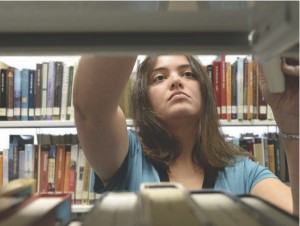Rising college costs defy simple solutions, confound governments
As another school year dawns and students scramble for another set of school payments, people may  wonder: What changes, if any, are being established to help curb the ever-rising costs of attaining a higher education?
wonder: What changes, if any, are being established to help curb the ever-rising costs of attaining a higher education?
As the Obama Administration announced Aug. 22, 2013, the federal government intends to establish its own Postsecondary Institution Ratings System (PIRS) for colleges and universities, which would operate in a manner distinct from current private ratings systems such as those by Princeton Review or U.S. News.
It would rank schools based on factors of outcome and accessibility, ranging from graduation rates and

average postgraduate earnings to the amount of enrolled low- income students eligible for Pell Grants. Once established, these ratings will eventually form the basis for how the federal government would distribute its approximately $150 billion in annual aid for higher education.
Currently the federal government distributes collegiate endowment based primarily on factors such as size of school or amount of research performed. Often little attention is paid to undergraduate outcomes. The proposed reforms would not necessarily increase that $150 billion total. However, it would redistribute funds to schools that are “most deserving,” and purportedly encourage schools to become more efficient in their spending.
“It seems like fees don’t always benefit us students,” Corey Arango, a DePaul junior, said. “I would like to see more accountability about tuition going toward professors, rather than useless amenities.”
However, the time table for these federal reforms has not currently worked up to plan. The ratings system was originally set to be active by the 2014-15 school year with ratings-based spending changes occurring by 2018. However, the ratings system is currently nowhere to be found.
Need for cost respite is evident, as many figures show. According to College Board, the national average for undergraduate tuition, room and board at four-year private colleges has risen to $40,917, a more than $10,000 increase over the average 15 years ago. When calculating net price, which factors in student aid versus costs, the average rate is still $23,290 per year.
DePaul’s current average annual cost for undergrad students residing on campus is about $49,000. The average net price is around $36,880 for undergrads, according to CollegeFactual.com and is expected to increase by 6 percent annually over the next few years.
With such rapidly rising costs and comparatively stagnant improvement in grants and national income, many low- income students of ware often locked out of higher education. Many others are pushed into taking increasingly risky loans to fund their education.
Three-year student loan default rates at DePaul were 6.2 percent, according to CollegeFactual.com. Although this was lower than the most recently released national rate of 9.1 percent, DePaul’s default rates have still risen over the past few years.
As recently as 2008, they were lower than 2.5 percent. Loan defaults can have profound adverse effects throughout a lifetime, such as affecting a person’s ability to qualify for a home mortgage.
If the aforementioned federal reforms were to be implemented, they could possibly benefit DePaul’s endowment and its students.
“From DePaul’s perspective, we may be harmed or benefited depending on how factors are weighted,” William Sampson, a DePaul professor of educational policy, said. “We have many liberal arts and theater graduates who don’t necessarily earn much immediately after graduation; this could look bad in ratings. However, if (the ratings) seriously take into account diversity or Pell Grant recipients, DePaul will benefit.”
With continual delays to changes in federal aid, however, it seems that possible respite for students is unlikely to come from the federal sector. With this in mind, one must ponder what the likelihood is for college students to receive any respite from the state level.
“Not likely” Sampson said. Currently, the state has a multibillion-dollar debt, largely relating to mismanaged pension funds, and the Illinois MAP Grant — essential for many low-income students attending college — has been on the cutting block for years, and may face an additional $50 million cut in the upcoming year, according to the Illinois Student Assistance Commission.
“Even if Illinois somehow increased its educational spending, public schools would likely get funded first before higher education. They have more political clout and, frankly, more financial need,” Sampson said.
What paths, if any, remain to reduce the financial burden on college students? Other states have taken on their own independent paths toward student aid and college funding and administration.
For example, the state of Virginia has already established its own comprehensive government ratings systems. Although this does not by itself lead to increased student affordability, it can lead to greater transparency and fewer predatory practices by colleges, specifically for-profit universities.
Administrators and politicians in other states have also proposed harder caps on costs for higher education. Ryan Taylor, a candidate for a seat on North Dakota’s Industrial Commission — which oversees the state’s banks — proposed a fixed 1 percent interest rate for state student loans.
In the absence of increased state funding or federal action on rising college costs, respite may come from the adaptation of innovative or cost-effective proposals made by administrators in other states.
However, barring the implementation of any unannounced policies in the state level, the short-term picture for educational costs looks increasingly bleak and expensive, and much of DePaul’s current student body is unlikely to see any cost reductions before graduation.
“Each year it seems to get more and more expensive,” Arango said. “Its not like schools are necessarily improving at the same rate.”

